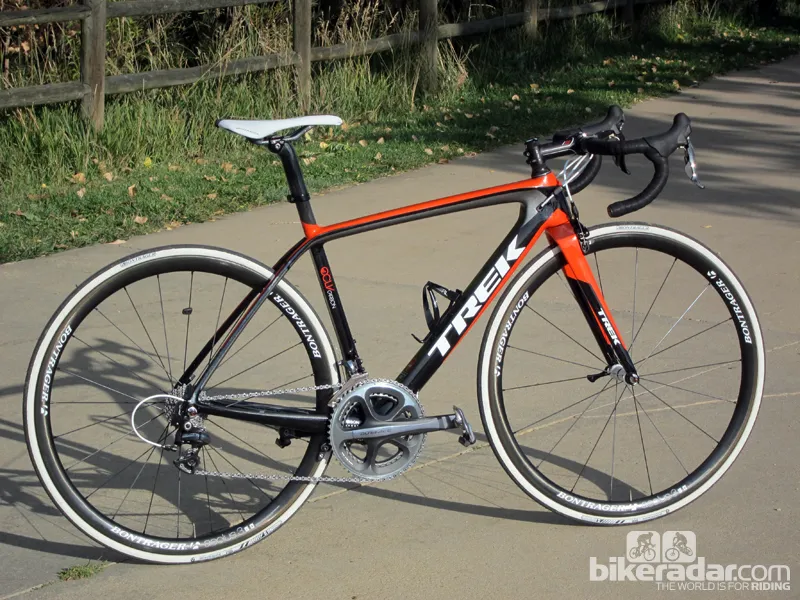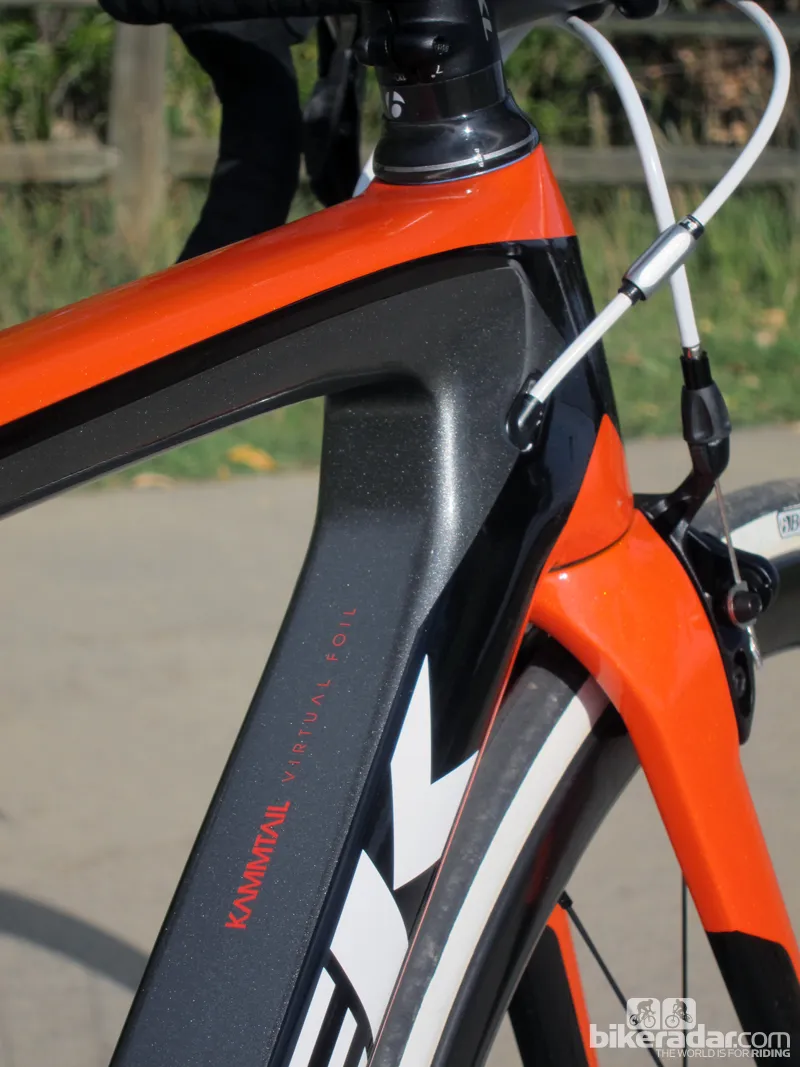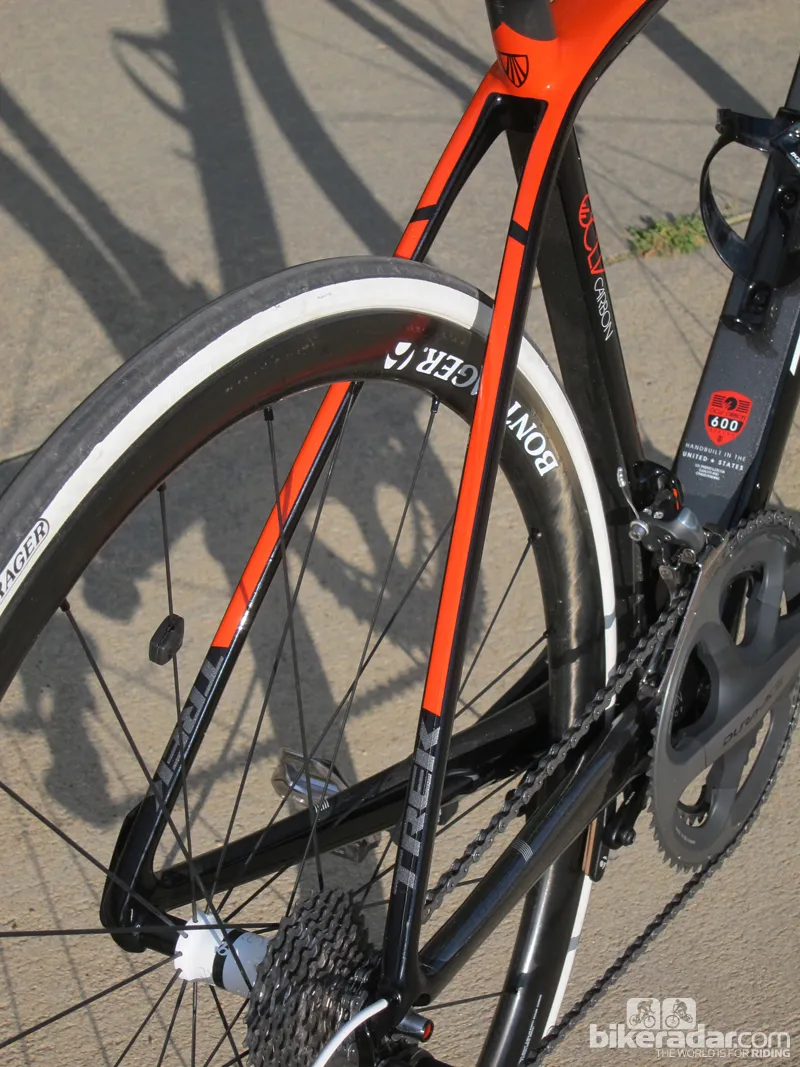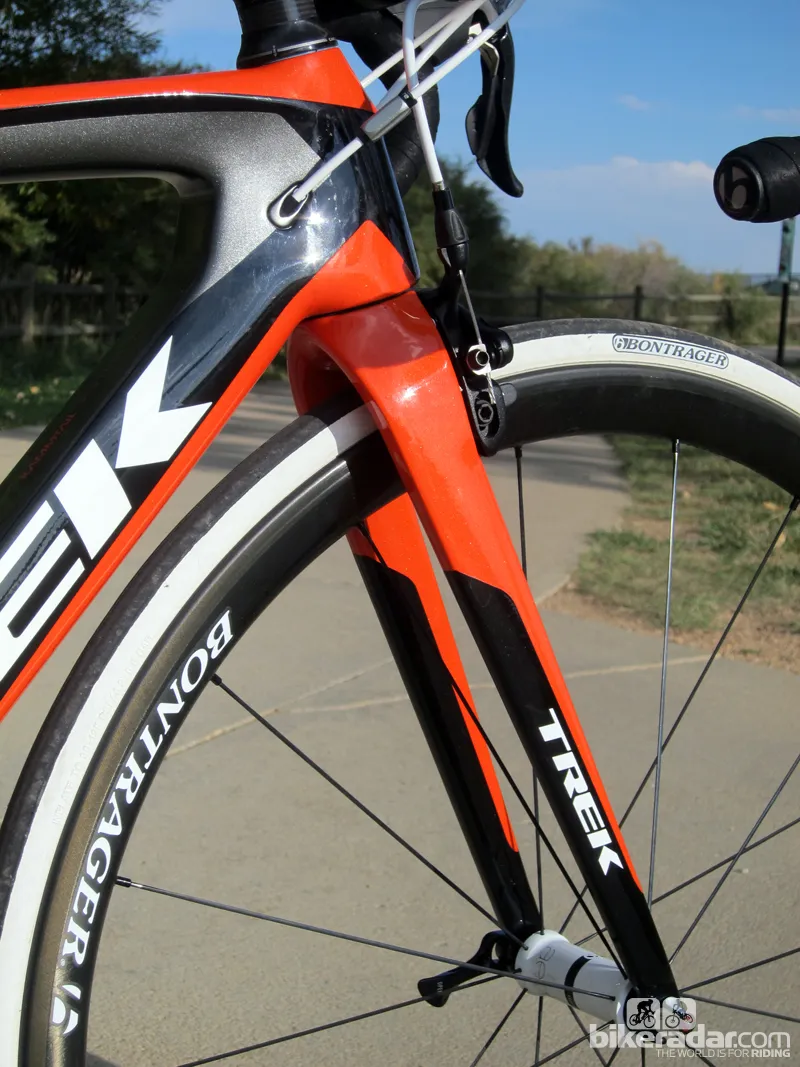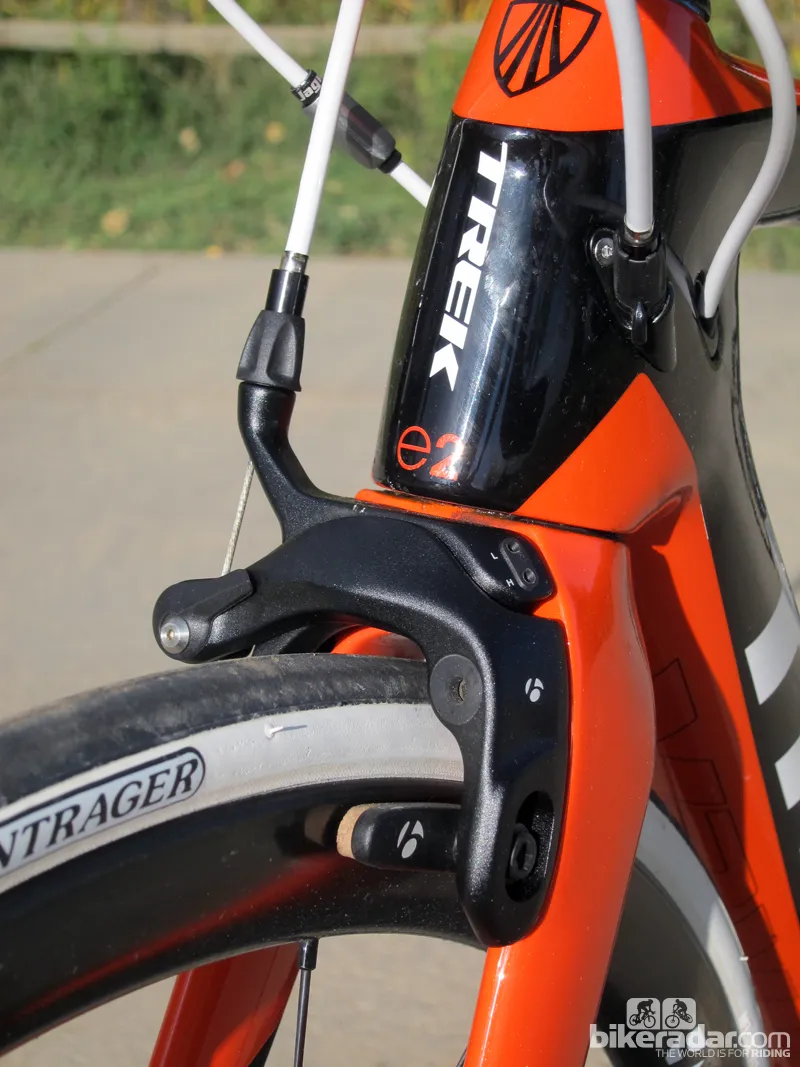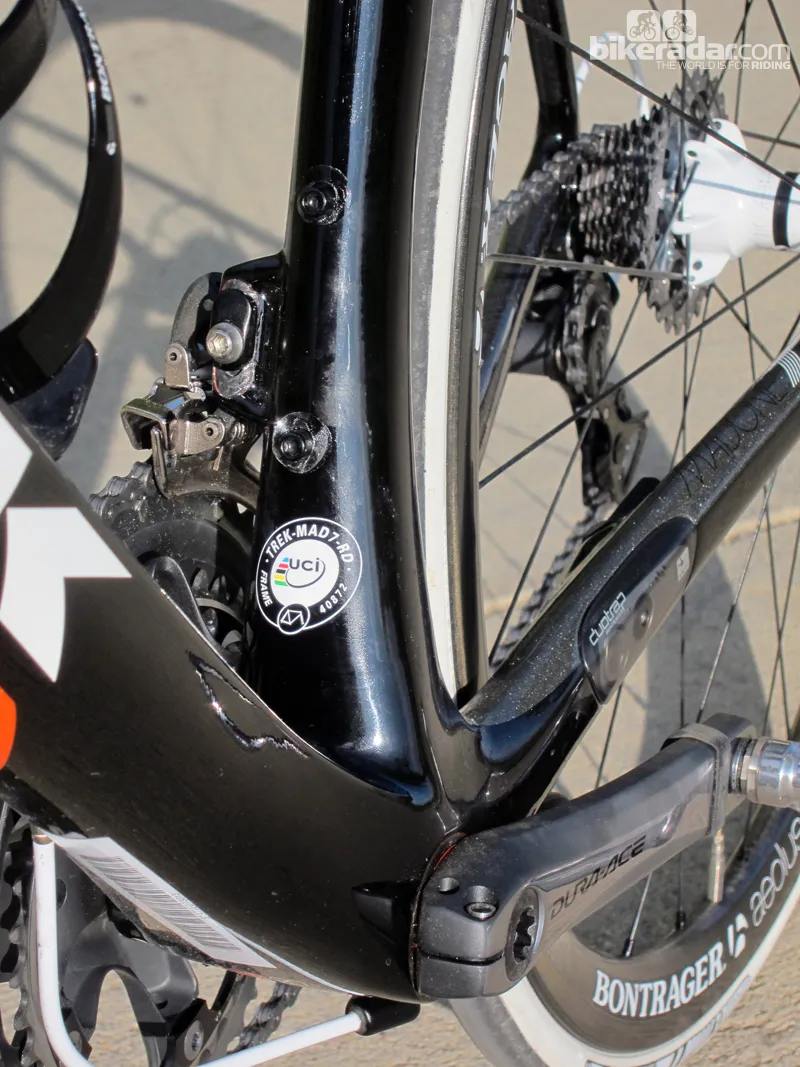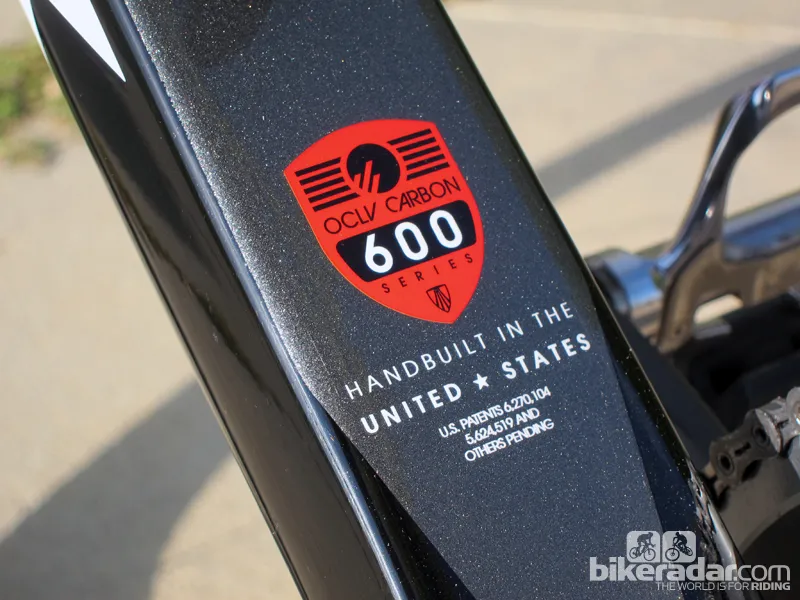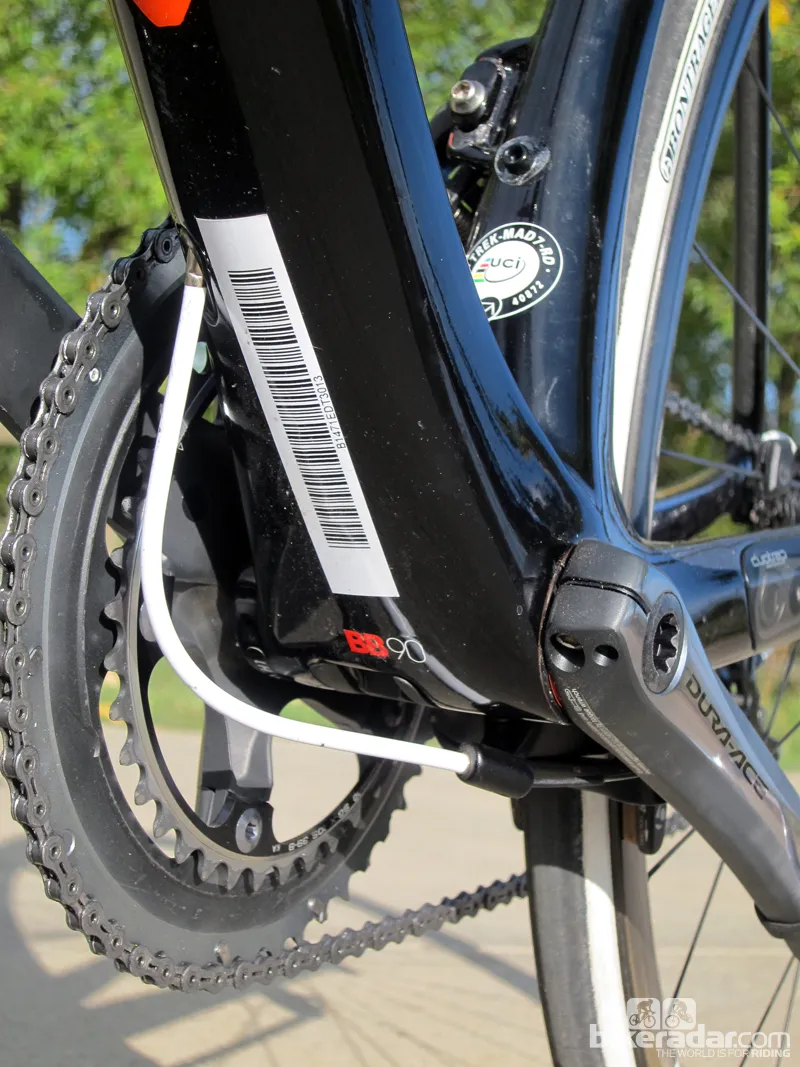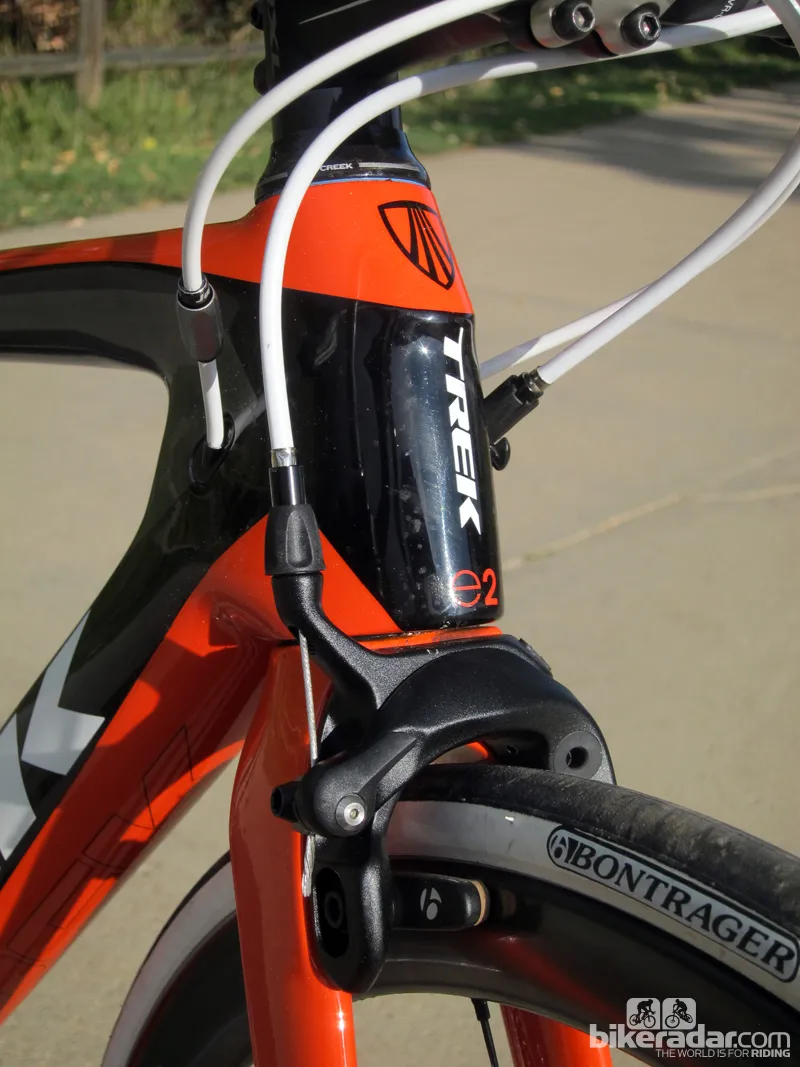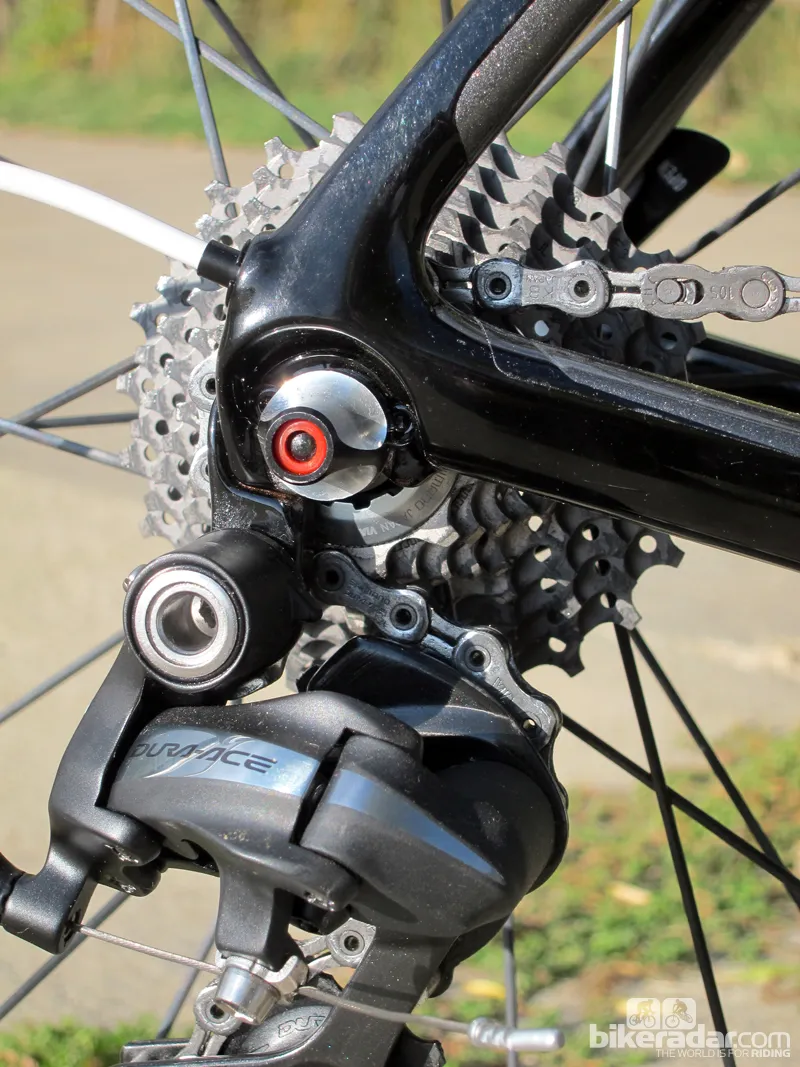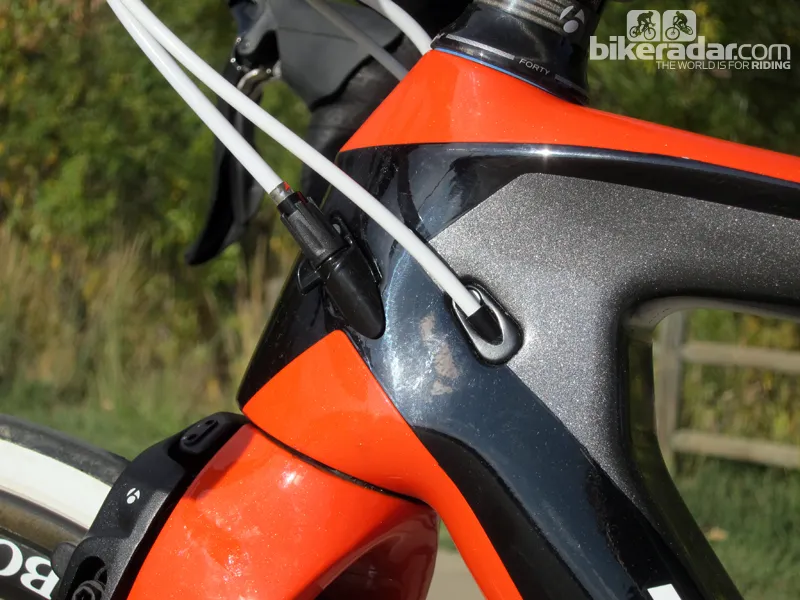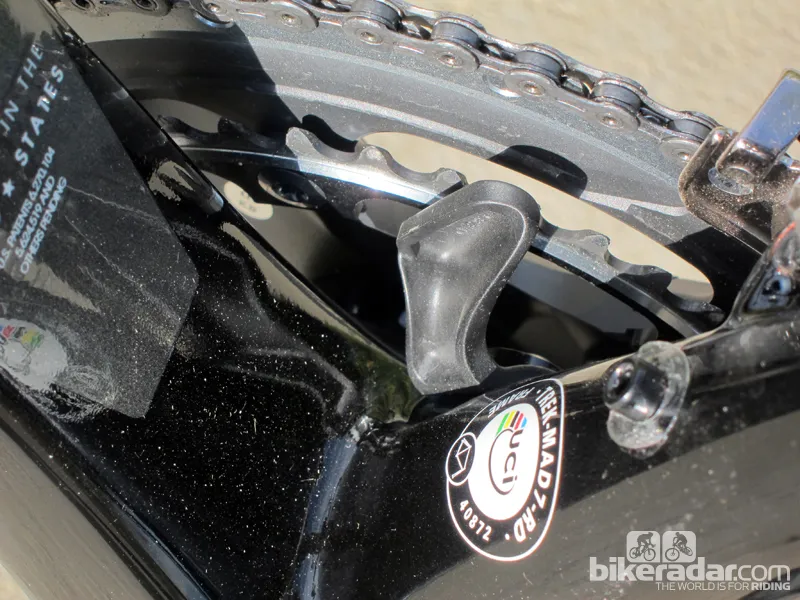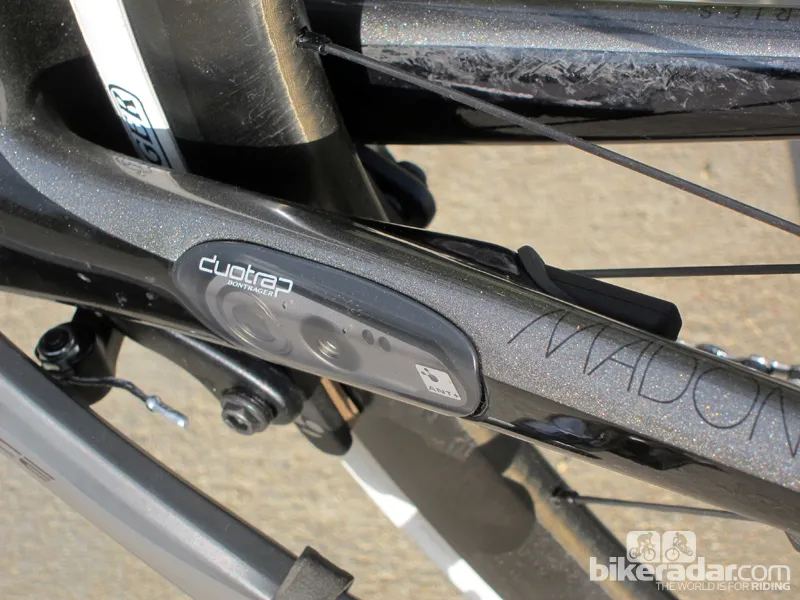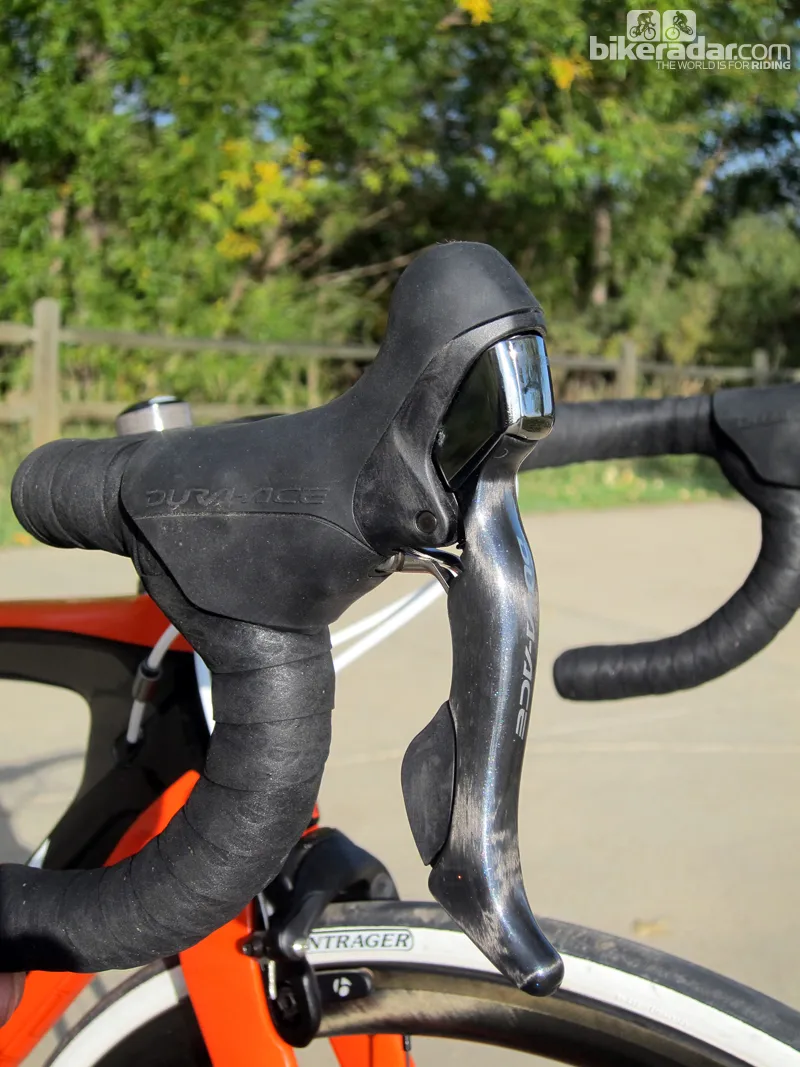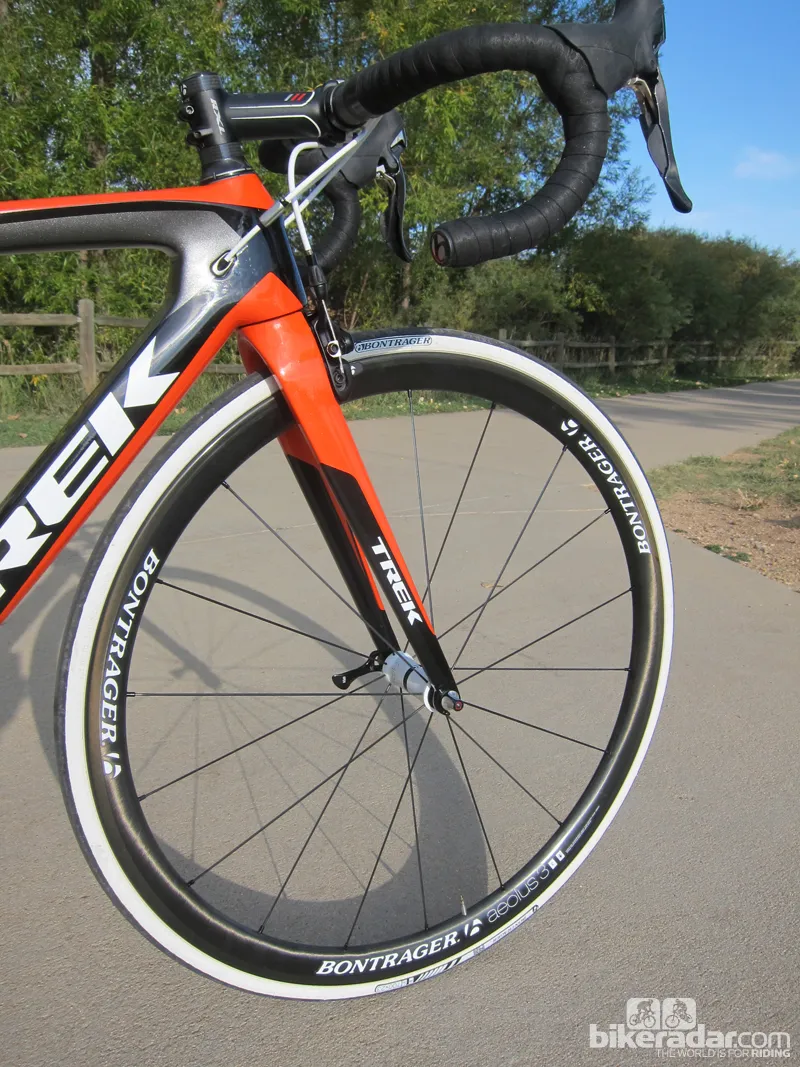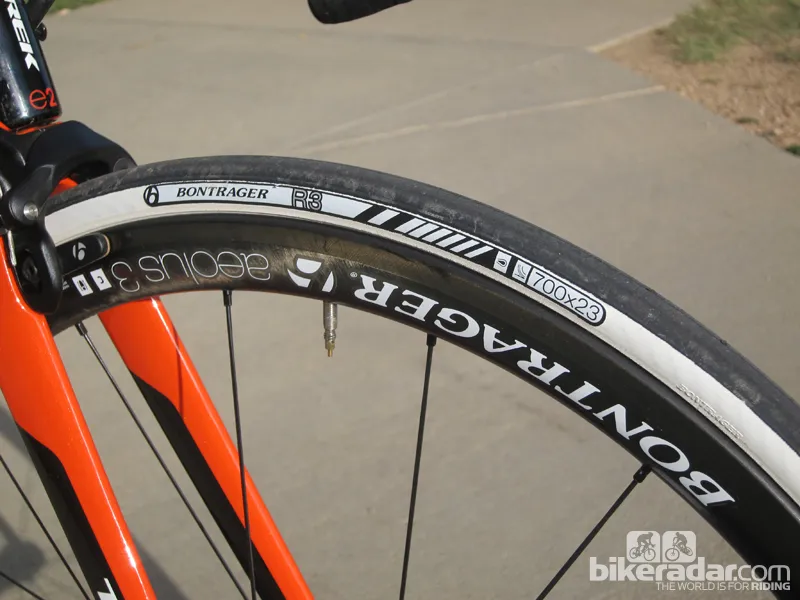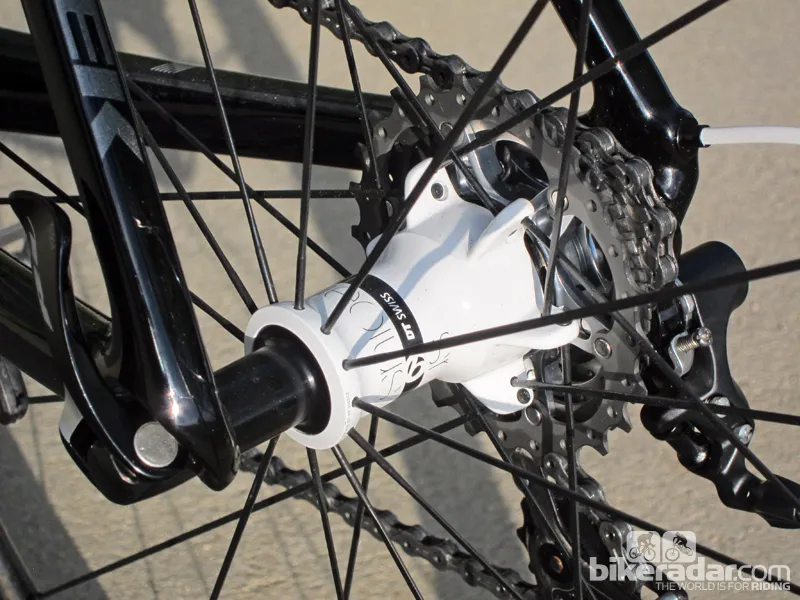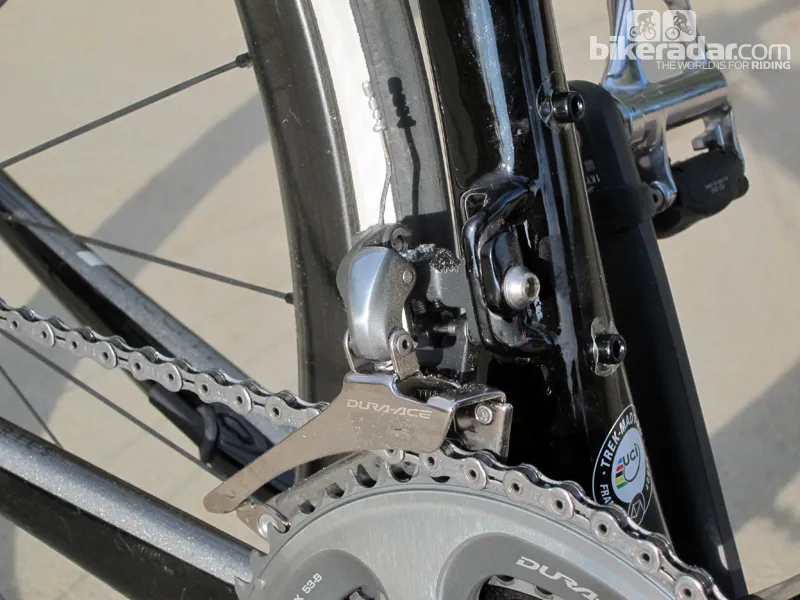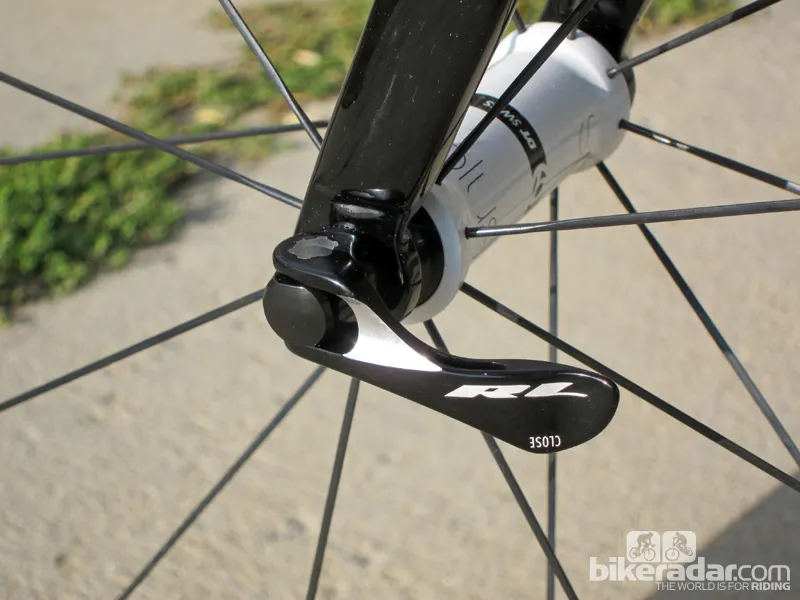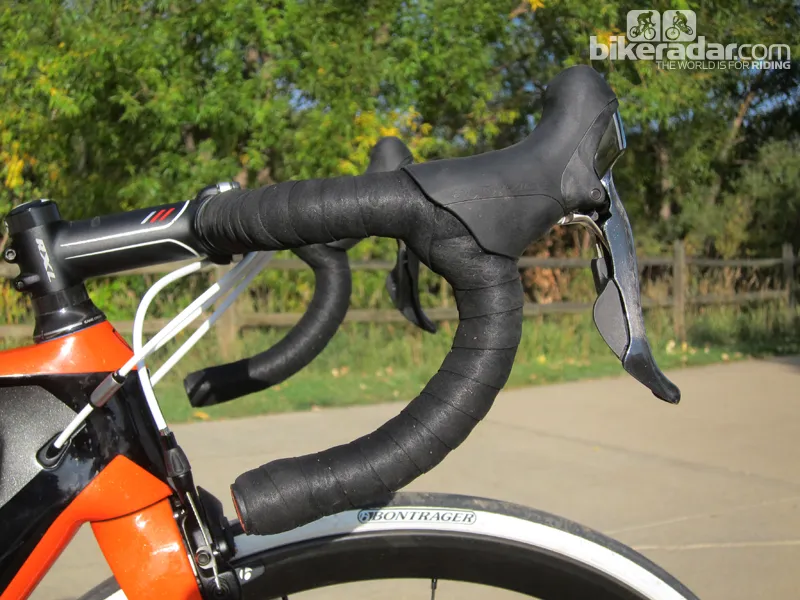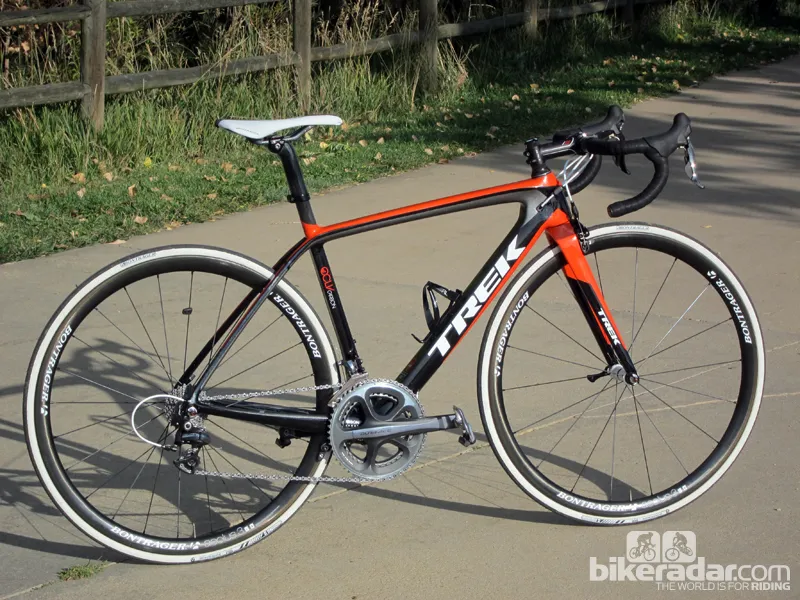Trek cooked up a radical redesign of its workhorse Madone 6-Series road chassis last year, infusing a healthy dose of aero ingredients borrowed from its groundbreaking Speed Concept TT/tri bike.
As expected, the aero claims are eye opening: 25 watts of saved energy at 40km/h compared to the previous Madone – nearly two minutes per hour. We can't verify those figures ourselves without hitting the wind tunnel – and they certainly can't be felt while out on the road – but what we can confirm is that Trek has carried over most of the existing Madone DNA to produce yet another solid ride.
Ride and handling: Same Madone brilliance but with a slightly smoother ride
Purported aero benefits aside, the new Madone feels much like the old one in many ways – and that's a good thing. As always, one of the best features is the bike's handling.
While many machines are billed as 'neutral', the Madone defines the term with intuitive manners that practically require just a thought to go where you want. Neither overly twitchy nor somnabulantly boring, the pitch-perfect geometry – 73-degree head tube angle, 976mm wheelbase, and 72mm bottom bracket drop on our 52cm sample – carves a wicked arc through sinuous high-speed descents, confidently switches lines mid-corner, and still nails the proverbial 'peel a banana at speed' test.
Trek has, however, tweaked the numbers a bit. Specifically, the more aggressive 'H1' fit variants now have a slightly more stretched-out position but the consequently longer (and, thus, more stable) front center is offset by a slightly steeper head tube. Aside from the increased reach, then, riders moving from an older H1 frame to a newer one shouldn't notice any difference handling-wise.
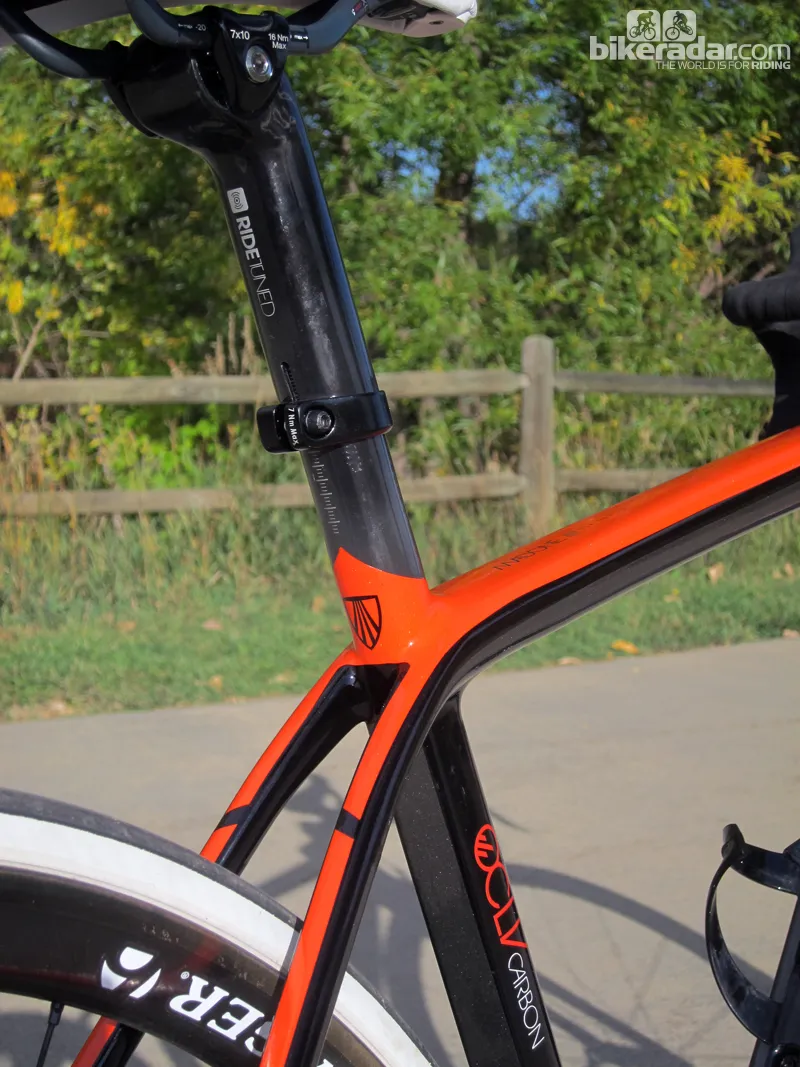
The latest Madone again uses Trek's no-cut seatmast design
Drivetrain and front-end rigidity also feel unchanged from before, which is again just fine given that the predecessor was very good in those respects. While still not quite on par with some more stoutly reinforced options, the Madone 6-Series is an eager and lively beast when you get on the gas. Save for especially fit riders with above average power outputs, we doubt most people will notice a difference.
Ride comfort has improved too, albeit marginally. Trek's move to a chain stay-mounted rear brake (more on this later) leaves the seat stays unencumbered by extra reinforcements, and they're impressively slim from seat cluster to dropouts in order to flex a bit more under impact. Despite the major visual change – this is the first carbon Madone not to use some sort of seat stay wishbone – it's still a fairly firm ride.
Frame: Dramatic Kammtail shaping
Rather than run two separate carbon road bike campaigns – one that prioritizes stiffness and weight and another that concentrates on aerodynamics – Trek has decided to roll all three priorities into one chassis.
As with the Speed Concept, the key element is Trek's Kammtail Virtual Foil (KVF) tube shaping, which uses truncated airfoil cross-sections that supposedly maintain the aerodynamic performance of a traditional teardrop shape but without requiring unusually narrow profiles that might compromise structural requirements or violate UCI technical regulations.
As such, the Madone looks fairly traditional from a distance, and includes Trek's long-standing design features: the ultra-wide BB90 bottom bracket, the fat E2 1 1/8in to 1 1/2in tapered head tube, the round no-cut integrated seatmast, and the generously proportioned down tube and chain stays. However, a closer looks reveals that the more upright elements are shaped more like a 'U' with flat trailing edges.
Further nods to cheating the wind include direct-mount front and rear brakes, with the former's shape integrated and blended into the fork crown and the latter moving down beneath the chain stays where the airflow is already turbulent.
Virtually everything is carbon fiber, too, including the bearing seats for the integrated headset and bottom brackets and the rear dropouts. Once again, the non-driveside chain stay incorporates a pocket for the ultra-tidy Bontrager DuoTrap wireless speed and cadence sensor.
Cabling is internal throughout and convertible between electronic and mechanical drivetrains. Removable ports at the rear brake and under the bottom bracket shell ease maintenance some but the lack of internal guides still makes servicing tricky if you don't have the forethought to run liners through the frame before yanking out the old cables.
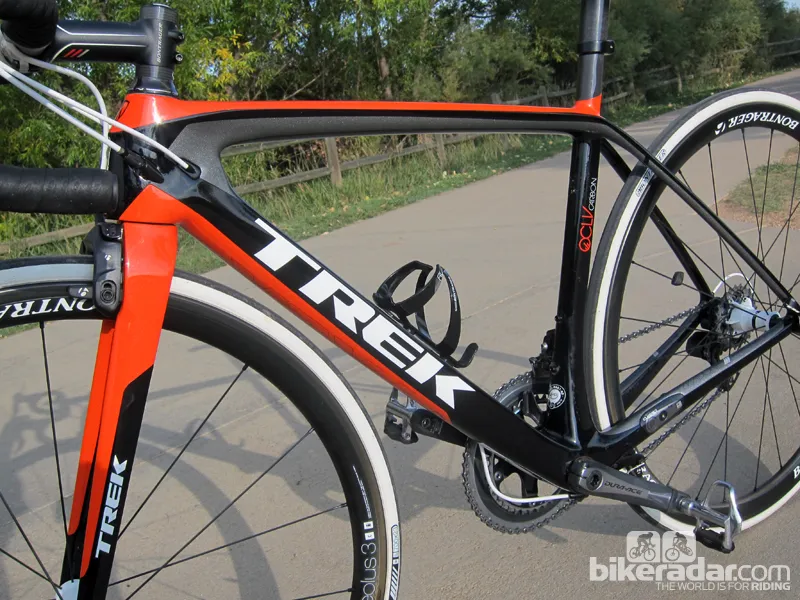
Internal routing and the chain stay-mounted rear brake make for a clean-looking package
Unfortunately, we took issue with some of the routing's entry and exit ports, too. The entry ports for the derailleurs and rear brake are too far forward, meaning that riders with smaller frames (or ones using shorter and/or lower stems) will have to run bigger loops of housing to prevent binding.
Trek recommends running derailleur lines around the head tube and crossing them back over inside the down tube but we had better luck both visually and functionally by straightlining everything front-to-back.
Likewise, the rear brake path is less than optimal. While the port placement is questionable on its own, Trek further complicates matters by adding a plug-in quick-release and barrel adjuster – necessary evils given the brake placement.
However, while the add-on fits sloppily in the stop (making for a vague feeling lever), it effectively kicks the port even further forward. And the exit port's location immediately behind the bond line at the bottom of the down tube makes feeding a cable through an exercise that almost requires having a stiff drink on hand.
Even worse, the cable noticeably drags on the exit port's aluminum noodle, too. Adding in a short piece of housing liner helped with the friction, though, while yanking out the crank and bottom bracket (not to mention a flashlight and a spoke on hand) made it a little easier to run the cables. Even so, what should have been a five-minute job was anything but.
On the plus side, the hidden rear brake and internal routing yields a distinctly clean-looking rig with minimal filigree to muddy up the sleek lines. Once those lines are run, the frame will also mostly protect them from dirt and water, so at least you won't have to deal with replacements that often.
While the new frame might be more aero, it isn't any lighter. In fact, the 52cm H2 Madone 6-Series frame we tested more than two years ago weighed 948g, while this new one is 1,000g even despite the more compact H1 front triangle geometry. Likewise, fork weight has climbed a bit, up from 300g to 330g.
Equipment: Mostly solid kit but integrated brakes are disappointing
Our wonderfully light, 6.54kg (14.42lb, without pedals) custom-built test bike was an early media sample sent before Shimano had adequate stock of the new Dura-Ace 9000 group. As such, Trek built it up with previous-generation Dura-Ace 7900 that will no longer be available, so we won't bother to comment on it here aside from saying that the new kit will be even lighter.
As usual, Trek's house brand Bontrager label adorns just about everything. The lightweight RXXXL carbon handlebar is comfortable in terms of its compact bend and shock absorbing abilities, the Affinity RXL saddle is light and distributes pressure fairly evenly (but seems better suited to slightly more upright positions), and the utterly reliable RXL forged aluminum stem gets the job done with minimal fuss, although its relatively small-diameter extension is falling behind the times stiffness-wise.
Bontrager also includes its latest Aeolus 3 D3 carbon clincher wheels wrapped in aero-profile R3 tires. At a claimed 1,440g per pair they spin up reasonably quickly, as expected, while the ultra-fat, 35mm-deep rim supposedly matches the aero performance of much deeper wheels.
As an added bonus, they're impressively stable in crosswinds, and because the rim is actually wider than the tire there's no need to undo the brake quick-release when changing a flat. The ultra-reliable, DT Swiss-built star ratchet rear hub internals should last for ages, too. Stiffness could be a little better, though – we noted repeatable brake rub up front when climbing out of the saddle.
Likewise, the R3 tires might be more aerodynamically efficient than traditional rubber with their slightly oval profile and molded-in 'wings' to smooth the gap between tire and rim, but the stiff casings don't ride as well as the Madone chassis deserves. In addition, the raised center lends a tippy feeling on-center with a disconcerting transition that makes the bike want to 'fall' into corners.
We swapped them out for a set of Continental Force/Attack clinchers and happily restored the Madone's innate handling prowess, along with a much improved ride quality.
The one major Bontrager-related disappointment is unfortunately a significant one. While Shimano will soon have its own direct-mount brakes to offer, the stock Bontrager Speed Limit calipers are just about all that's available for now.
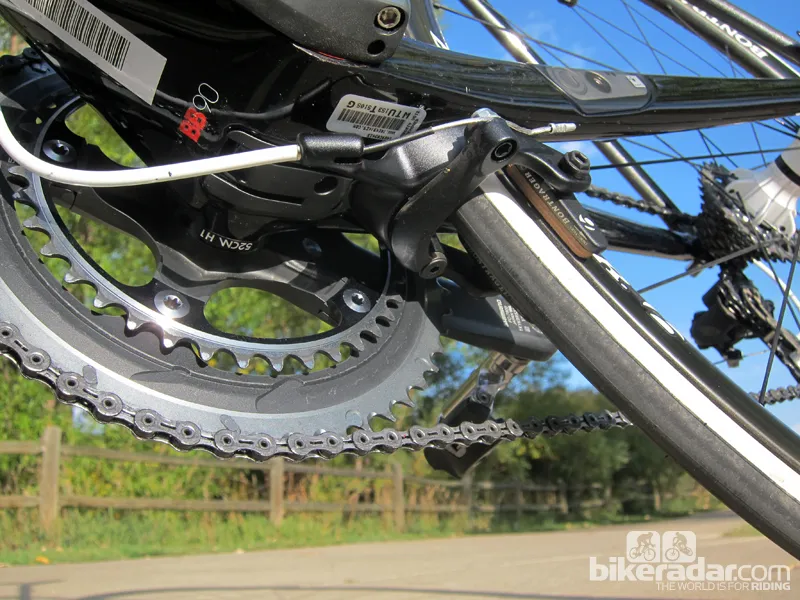
The rear brake isn't accessible while riding
Weight is competitive, at 154g apiece with mounting hardware, but they're visually chunky and cheap looking. The associated hardware feels rather low-rent, too, with a lowly steel M6 locknut used for the rear cable anchor and soft aluminum pad hardware that easily takes a set, making it difficult to get a good adjustment.
More to the point, they don't work as well as they should. The flex-free mounts yield a firm lever but high-end power is lacking, exacerbated by the stock Bontrager cork pads' so-so initial bite. We had to squeeze awfully hard to rein in speed when hurtling down some of our most familiar descents. In addition, the pivots bind if they're tightened down too much. Loctite on the threads is a must.
Even the brakes' placement complicates matters. None of the pad fixing screws can be readily accessed on the bike – meaning you have to readjust the cartridges every time you swap pads – and it's virtually impossible to sight the rear brake pads on the rim while simultaneously squeezing the lever. Adding even more fuel to the fire is the fact that they simply don't look very high-end, either.
Trek has managed to integrate aerodynamic performance into the new Madone while impressively maintaining all of the old bike's most important characteristics: weight, stiffness, ride quality, and handling. The devil is in the details, though, and we can't help but feel a few important ones were overlooked here.
